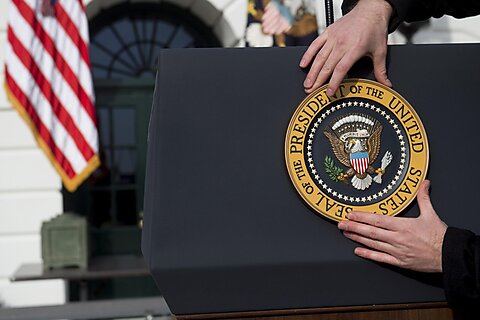Adam N. Michel
Interest rates on 10‐year Treasury bonds recently surpassed 4.7 percent after not exceeding 3.1 percent in the decade before 2022. Rising bond yields make borrowing more expensive for the federal government and increases the likelihood of a fiscal crisis.
In July, the Congressional Budget Office (CBO) assumed 10‐year bond yields would be 3.8 percent right now, rising to 4 percent in 2024. We breached the 4 percent threshold in August.
In addition to increasing the cost of new borrowing, higher interest rates mean the US government’s $25 trillion of outstanding debt held by the public will grow more quickly as it is refinanced at higher rates. About half of the debt will need to be refinanced over the next three years.
As a rule of thumb, Brian Riedl estimates that “each additional [interest rate] percentage point would cost Washington $2.8 trillion over the decade, and $30 trillion over three decades.”
Where interest rates will eventually settle is unclear. But two things are clear. First, investors are currently demanding a higher return to lend to the federal government. Second, the federal government intends to continue borrowing—with annual deficits already projected to rise past $2 trillion within the decade.
High and rising interest rates increase the prospect of a European‐style fiscal crisis. Sooner or later, rising interest rates will create a doom loop of more borrowing just to service interest payments on existing debt. When such an episode occurs, governments are typically forced into undertaking rapid deficit reduction efforts. They can cut spending, increase taxes, or both.
Politicians often turn to tax increases first, but tax‐heavy fiscal adjustments often fail to address the underlying drivers of deficits and cause more economic damage, prolonging recessions. Learning from previous successful deficit reductions, Congress should focus on flattening the long‐term path of spending.
Tax Increases or Spending Cuts?
In their 2019 book Austerity: When It Works and When It Doesn’t, Alberto Alesina, Carlo Favero, and Francesco Giavazzi summarize more than a decade of research on how countries have reduced budget deficits across 184 distinct austerity plans. The authors conclude: “Tax‐based plans lead to deep and prolonged recessions, lasting several years. Expenditure‐based plans on average exhaust their very mild recessionary effect within two years after a plan is introduced.” Because expenditure‐based plans also usually include some tax increases, it’s worth noting that spending‐cut‐only plans may not be recessionary at all.
Major entitlement programs—Medicare and Social Security—are responsible for almost all the projected non‐interest spending growth over the next three decades. Rapid health and retirement spending growth is neither caused by a lack of revenue nor fixable with tax increases. As I estimated earlier this year, “if Treasury collected as much revenue as it did in 2000 when it had a record 2.3 percent budget surplus, the U.S. would still have a 2022 budget deficit of about 5.1 percent of GDP (compared to the actual 5.5 percent deficit).” The deficit would continue to grow toward 10 percent of GDP over the next 30 years.
Even if Congress wanted to import a European‐style tax system—raising taxes by thousands of dollars on Americans at every income level—it would still need to rein in spending growth, which is not projected to level off in any current projection.
In addition to being unable to fix the underlying growth rate of spending, tax increases come with economic costs that often worsen fiscal crises. In a 10‐year review of new empirical research following the financial crisis, Valerie Ramey showed that in a majority of estimates, tax increases reduce GDP by two or three times the amount of revenue they raise.
In a 2020 report, I explained:
“Because tax increases have steep economic costs, they are less effective at reducing deficits. Alesina and his co‐authors conclude that tax‐based fiscal adjustments are “self‐defeating: they slow down the economy and do not reduce the debt ratio.” Relying on taxes to close the fiscal gap can create a cycle of tax increases that slow down growth, which adds pressure to expenditure growth by increasing the use of countercyclical anti‐poverty programs, which then requires still higher taxes to avoid a debt crisis. Additional evidence outside fiscal crises also shows that new taxes are followed by increases in spending, making deficits larger, not smaller.”
If large tax increases are self‐defeating, it leaves spending cuts as the most effective way for Congress to address the budget crisis. Spending cuts are less likely to prolong recessions and can address the root cause of long‐term deficits, uncontrolled spending growth.
In a review of fiscal adjustments, Andrew Biggs, Kevin Hassett, and Matthew Jensen conclude, “lasting reductions in debt stem from expenditure cuts, and less so from revenue increases…our results indicate that social transfer reductions should comprise the largest share of the consolidation; there is a stark difference between the very large transfer shares in successful consolidations and very small transfer shares in unsuccessful consolidations.”
Conclusion
If Congress is serious about fixing the long‐term debt challenge, it must address the programs no one wants to talk about. My Cato Institute colleague Romina Boccia recently put it this way: “With Medicare and Social Security responsible for 95 percent of long‐term unfunded obligations, according to the Treasury Financial Report, there’s simply no way any serious fiscal reform effort can leave these programs untouched.”
Alesina’s research has one more hopeful conclusion for politicians facing these tough choices. In a review of electoral outcomes following large fiscal adjustments, Alesina and co‐authors find “no evidence that governments which reduce budget deficits even decisively are systematically voted out of office.” There really is no excuse for continuing to kick the fiscal crisis can further down the road.
Today’s rising interest rates are a warning to Congress: get your fiscal house in order to avoid a crisis. Past fiscal adjustments provide another warning: relying on tax increases to fix budget problems is a recipe to make things worse, not better.
























